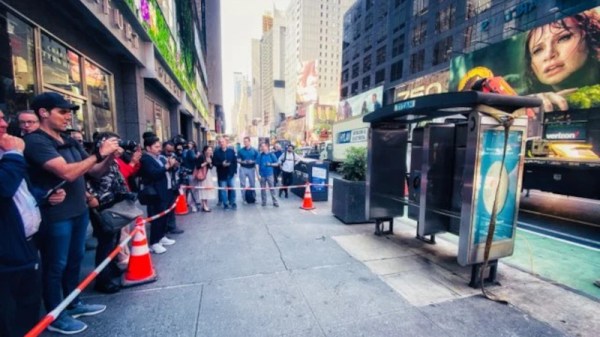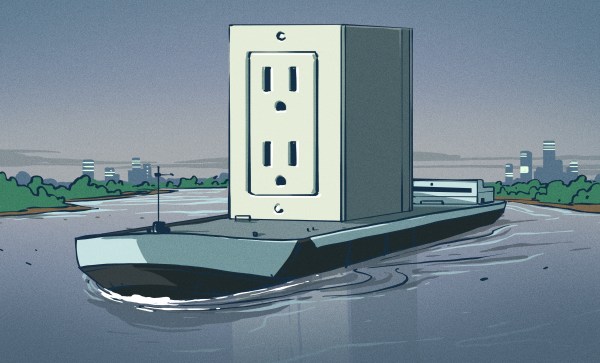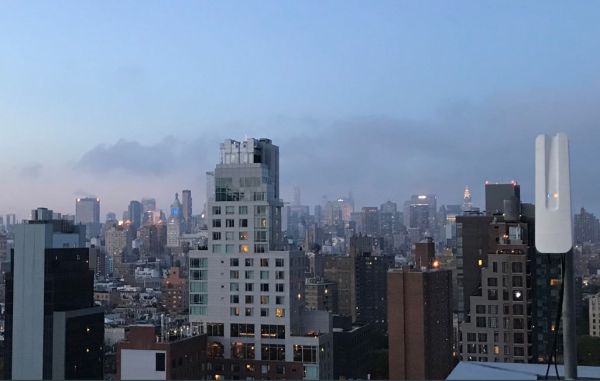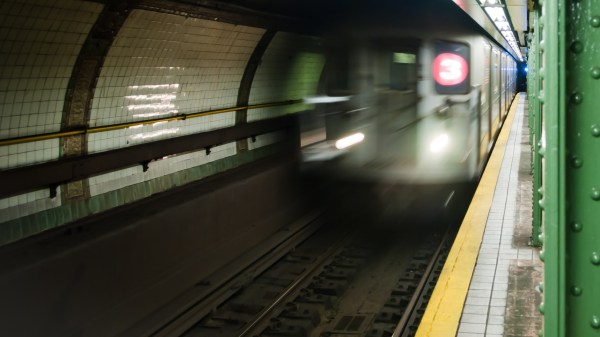The dystopian future you’ve been expecting is here now, at least if you live in New York City, which unveiled a trio of technology solutions to the city’s crime woes this week. Surprisingly, the least terrifying one is “DigiDog,” which seems to be more or less an off-the-shelf Spot robot from Boston Dynamics. DigiDog’s job is to de-escalate hostage negotiation situations, and unarmed though it may be, we suspect that the mission will fail spectacularly if either the hostage or hostage-taker has seen Black Mirror. Also likely to terrify the public is the totally-not-a-Dalek-looking K5 Autonomous Security Robot, which is apparently already wandering around Times Square using AI and other buzzwords to snitch on people. And finally, there’s StarChase, which is based on an AR-15 lower receiver and shoots GPS trackers that stick to cars so they can be tracked remotely. We’re not sure about that last one either; besides the fact that it looks like a grenade launcher, the GPS tracker isn’t exactly covert. Plus it’s only attached with adhesive, so it seems easy enough to pop it off the target vehicle and throw it in a sewer, or even attach it to another car.
nyc27 Articles
NYC Hangs Up Its Last Pay Phone
It was a melancholy Monday this week in the Big Apple as the last public payphone was uprooted from midtown Manhattan near Times Square and hauled away like so much garbage. That oughta be in a museum, you’re thinking, if you’re anything like us. Don’t worry; that’s exactly where the pair is headed.
This all started in 2014 when mayor de Blasio pledged to move the concept of street-level public utility into the future. Since then, NYC’s payphones have been systematically replaced with roughly 2,000 Link Wi-Fi kiosks that provide free domestic phone calls, device charging, and of course, Internet access. They also give weather, transit updates, and neighborhood news.
There are still a few private payphones around the city, so Superman still has places to change, and Bill and Ted can continue to come home. But if you need to make a phone call and have nowhere to turn, a Link kiosk is the way to go.
Although your Cap’n Crunch whistle hasn’t worked in decades, it’s still a sad day in history for the Jolly Wrencher, whose maiden message was about ye olde red boxen. We’re already seeing pay phones live on as art, so that’s a good sign.
Floating Power Plants; The Coastal City Solution Sure To Be Increasingly Popular
Building new things in an existing city is hard. Usually, new development means tearing down existing structures. Doing so for apartment complexes or new skyscrapers is one thing, but infrastructure is much more complicated, both from an engineering perspective and an economical one. Not only do people not want to foot the tax bill for things they may not see an immediate benefit from, but it can be difficult to find the space for bigger roads, more pipelines, or subway tunnels in a crowded urban area. It’s even harder for infrastructure that most consider an eyesore, like a power plant or electric substation. It’s no surprise then that some of the largest cities in the world have been making use of floating power plants rather than constructing them on dry land.
The latest city to entertain a bid for a new floating power plant (FPP) is New York, which is seeking to augment its current fleet of barge-based power stations already in operation. It already operates the largest FPP in the world at Gowanus in Brooklyn, which is able to output 640 MW of electricity. There’s also a 320 MW plant nearby as well, and the new plants would add eight 76 MW generators to New York City’s grid.
Let’s take a look at what goes into these barge-based generator designs.
Continue reading “Floating Power Plants; The Coastal City Solution Sure To Be Increasingly Popular”
Connecting New York City To The Backbone: Meet NYC’s Mesh Network
Access to fast and affordable internet is a big issue in the USA, even in a major metropolis such as New York City. Amidst a cartel of ISPs who simply will not deliver, a group of NYC inhabitants first took it upon themselves to ease this situation by setting up their own mesh-based internet connections way back in 2013. Now they will be installing a new Supernode to take the installation base far beyond the current 300 buildings serviced.
As a community project, NYC Mesh is run as a non-profit organization, with its community members supporting the effort through donations, along with partnerships with businesses. Its router hardware consists out of off-the-shelf equipment (with a focus on the Ubiquiti NanoStation NSM5) that get flashed with custom firmware containing the mesh routing functionality.
As this article by Vice mentions, NYC Mesh is one of 750 community-led broadband projects in the US. Many of those use more traditional fixed wiring with distribution lines, but NYC Mesh focuses fully on wireless (WiFi) links with wireless mesh networking. This has the obvious benefit that given enough bandwidth on the Supernodes that hook into the Internet exchange points (IXP) and an efficient mesh routing protocol, it’s quick and easy to hook up new clients and expand the network.
The obvious downsides of using WiFi and RF in general is that they are not immune to outside influences, such as weather (rain), RF interference (including from other WiFi stations) and of course fairly limited range if there’s no direct line of sight. In a densely populated city such as NYC this is not much of an issue, with short hops between roof tops.
Low Tech High Safety And The NYC Subway System
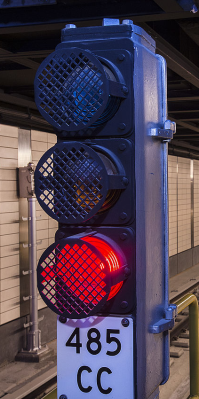 The year is 1894. You are designing a train system for a large city. Your boss informs you that the mayor’s office wants assurances that trains can’t have wrecks. The system will start small, but it is going to get big and complex over time with tracks crossing and switching. Remember, it is 1894, so computing and wireless tech are barely science fiction at this point. The answer — at least for the New York City subway system — is a clever system of signals and interlocks that make great use of the technology of the day. Bernard S. Greenberg does a great job of describing the system in great detail.
The year is 1894. You are designing a train system for a large city. Your boss informs you that the mayor’s office wants assurances that trains can’t have wrecks. The system will start small, but it is going to get big and complex over time with tracks crossing and switching. Remember, it is 1894, so computing and wireless tech are barely science fiction at this point. The answer — at least for the New York City subway system — is a clever system of signals and interlocks that make great use of the technology of the day. Bernard S. Greenberg does a great job of describing the system in great detail.
The subway began operation in 1904, well over 30 years since the above-ground trains began running. A clever system of signals and the tracks themselves worked together with some mechanical devices to make the subway very safe. Even if you tried to run two trains together, the safety systems would prevent it.
On the face of it, the system is very simple. There are lights that show red, yellow, and green. If you drive, you know what these mean. But what’s really interesting is the scheme used at the time to make them light.
Continue reading “Low Tech High Safety And The NYC Subway System”
Hackaday Links: October 1, 2017
Remember when you first saw a USB port in a standard wall outlet? It was a really great idea at the time, but how’s that 500mA charge holding up now? Fresh from a random press release, here’s a USB 3.0 wall outlet, with USB A and C ports. 5A @ 5V. Future proof for at least several years, I guess.
This is what you call ‘pucker factor’. An Air France A380 traveling from CDG to LAX suffered an uncontained engine failure somewhere over Greenland. Everyone on board is fine, except for the fact they had to spend the night in Goose Bay, Canada. Want the best Twitter/YouTube account of being a passenger? Here you go. Want to know why it landed in Goose Bay? This video is about ETOPS which really doesn’t apply in this instance but it’s a sufficient introduction to diverting airplanes after engine failures.
There are mysterious pylons going up alongside bridges and tunnels in NYC (auto-playing video). No one knows what they are, and the transportation board for New York is hiding behind a cloud of secrecy. We do know there are ‘fiber optics necessary for Homeland Security items’ inside, so place your bets. It’s facial recognition, or at the very least license plate readers. You know, exactly what New York and dozens of other cities have been doing for years.
Did somebody lose a balloon? A Raspberry Pi high-altitude balloon was found on the beach in south-west Denmark.
[Peter] is building an ultralight in his basement. We’ve covered the first part of the build, and we’ve been keeping tabs on him with semi-weekly updates. Now he’s fiberglassed the fuselage and started construction of the wings. Updates of note this week: he’s found a shop with an 8-foot CNC hot wire cutter for the wings. That really cuts down on the build time and it’s actually pretty cheap. One interesting part of this build is a ‘landing gear ejection system’, or a spring thing that allows the landing gear to fall away with the tug of a wire. Why would anyone want a landing gear ejection system? In case he needs to land in a soybean field. A flat bottom means a smoother and more survivable landing. If anyone is still concerned about [Peter]’s safety, this is a put up or shut up situation. Pitch in ten bucks for a parachute if you’re so concerned.
Hoverbike Kalashnikov! What? It’s a guy’s name. No big deal.
Open Hardware Summit is this week in Denver. What will be the highlights of the event? Well, last year, OSHWA announced the creation of an Open Hardware license. This is an all-encompassing license for Open Source Hardware that’s trying to solve some very, very hard problems. Copyright doesn’t work with hardware (except for boat hulls) like it does with software, and this Open Hardware license is the best we’ve got going for us. We’re going to get an update on how well this license is propagating. Also on deck for Summit attendees is a field trip to Sparkfun and Lulzbot. Want to see the world’s second largest 3D printer bot farm? It’ll be awesome.
Around The Globe On World Create Day
Last weekend was great for science and technology. While thousands of people took to the streets to protest anti-intellectualism, a few members of the Hackaday community dug their heels in, turned on the soldering iron, and actually did something about it. This was World Create Day, a community effort to come together and build something that matters. What did these people build? So much awesome stuff.
The Nest I/O in Karachi, Pakistan
 The folks at The Nest I/O hackerspace in Karachi, Pakistan had a rather large meetup for World Create Day featuring the finest in laser cut, googly-eyed fighting robots. [Nasir Aziz] hosted a meetup at his favorite hackerspace for people to get together, discuss, and build something for the Hackaday Prize.
The folks at The Nest I/O hackerspace in Karachi, Pakistan had a rather large meetup for World Create Day featuring the finest in laser cut, googly-eyed fighting robots. [Nasir Aziz] hosted a meetup at his favorite hackerspace for people to get together, discuss, and build something for the Hackaday Prize.
The highlight of the meetup was a discussion from EjaadTech, an industrial design firm that graduated from The Nest I/O accelerator. Among the projects invented during World Create Day were a ‘shopping helper drone’ and miniature fighting robots. Useful projects on one hand, awesome projects on the other, just like we like it.
MakerBay in Hong Kong
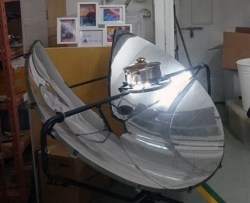
MakerBay is a hackerspace located smack in the middle of Hong Kong. Like most hackerspaces, finding a place was a problem, but the folks at MakerBay found something spectacular. They’re zoned industrial, and only a five-minute walk from a train station.
There are quite a few projects sitting around MakerBay including a solar oven that would be pretty dangerous if it were outdoors on a sunny day. Also on deck are prototypes of small sailing vessels with a flexible hull designed to track and contain oil spills. Highlights of World Create Day include upcycled wood construction and a spontaneous piano interlude. I’m surprised I haven’t seen more hackerspaces with a piano; they’re effectively free if you have a truck and a place to store it.
BlenderLab in Lille
While the World Create Day event at the BlenderLab hackerspace in Lille, France didn’t set out to change the world with a project, they did manage to come up with a really neat digital hourglass. The body of this hourglass is made out of laser cut plywood, with the display made out of two LED matrices oriented at a 45-degree angle.
Hackaday NYC
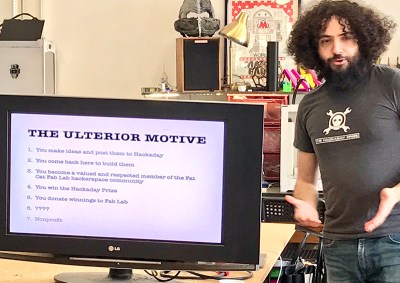
[Zach Freedman], one of the regulars at our NYC meetups has an ulterior motive for getting the Fat Cat Fab Lab members to contribute their ideas to the Hackaday Prize: winning the Hackaday Prize would result in donating the winnings to the Fab Lab. It’s a brilliant and devious plot we very much recommend.
Tell us about your World Create Day
There were many more events going on around the globe last weekend, and we want to hear about how your World Create Day went. We’ll be covering more of the events of last weekend in the coming days, so make sure to add your pictures, stories, and links to the projects you started on your World Create Day event page on Hackaday.io. Event organizers are going to get some super awesome swag for making that effort.


